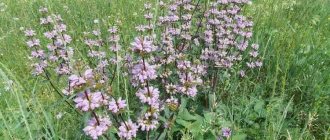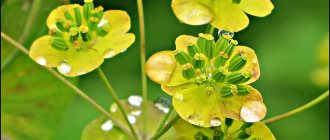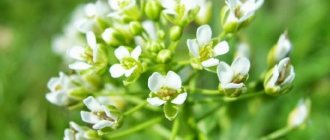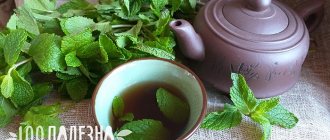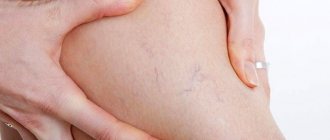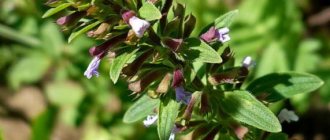Spreading
Zopnik grows in the Northern Hemisphere, is found in Africa, Asia, southern Russia, the Urals, and everywhere in Ukraine. Prefers open edges and clearings, slopes of ravines, coastal zones of rivers, grows in the steppe and among cereal crops.
In old times, the plant enjoyed magical fame.
It was believed that it expels evil spirits, promotes reconciliation between warring parties and protects against mortal wounds on the battlefield.
These properties are reflected in the popular names of the herb: dove grass, Juno's tear, seventh herb of Venus, Ukrainian ginseng.
The healing properties of zopnik have long been noticed in the treatment of diseases of the digestive and respiratory organs, including tuberculosis.
Collection and storage of iron ore
It is necessary to collect grass during the summer flowering period, when the buds gain strength and concentrate the greatest amount of nutrients. As herbalists note, it is better to collect in the morning and evening. In this case, it is advisable to pay attention to the side branches of the grass, since their parts are the most effective in use and are more suitable for harvesting. Next, the collected iron ore grass is dried in the fresh air and under a canopy. The use of artificial dryers, fans, hair dryers and other equipment is completely excluded, since their impact can destroy some of the beneficial elements of the medicinal herb. In order for the natural drying process to proceed faster, the grass should be rarely spread in a 10-centimeter layer and turned over from time to time during drying. It is advisable to organize the storage of above-ground parts and roots in dry bags so that sunlight does not penetrate to them. It is important to note that the herb is used mainly in dried form.
Description
Ironweed is a perennial plant from the Lamiaceae family, reaching 70-120 cm in height. The bushy stem has oppositely arranged elongated oval leaves on short petioles. Their rough surface is covered with small hairs that protect the grass from moisture evaporation in hot weather.
In June, fragrant lilac flowers, collected in whorls, open in the axils of the apical leaves. By the end of summer, dark brown seeds from four oblong nuts in a cup ripen.
There are spiny and tuberous zopnik (a characteristic feature of the latter is round nodules on a long root). These medicinal nodules are edible. They are used boiled and fried for food.
The use of iron ore herb in folk medicine
The herb zopnik has many indications for use. This is explained by the fact that it has a general strengthening effect on the body, replenishing the supply of useful elements. If necessary, it can also be used for preventive purposes. The effectiveness of medicinal herbs is increased by combining with other herbal remedies.
Important! Since ironweed grows slowly, it can be helped by dividing the bush in the spring.
For sore throat
For angina, a decoction of zopnik is often used. It helps relieve swelling and eliminate pain. The desired effect is achieved thanks to the anti-inflammatory properties of the plant. A decoction of iron ore is taken orally and used to gargle. Therapy is carried out until symptoms disappear completely. Usually this takes no more than 7-10 days.
Zopnik for gastritis
Zopnik tuberiferous is no less effective against gastritis. It restores stomach acidity and relieves discomfort. Due to its chlorophyll content, iron ore has an anti-inflammatory effect. The most successful option for combating gastritis is to take a decoction prepared according to a traditional recipe. It is drunk 1 tbsp. l. before every meal. The duration of treatment with iron ore is 15-20 days.
For chronic fatigue
With the help of iron ore you can also cope with physical exhaustion after heavy exertion. The desired effect is achieved by replenishing the supply of nutrients in the body.
Ingredients:
- 5 g iron ore;
- 5 g honey;
- 200 ml hot water.
Recipe:
- The iron ore is poured with hot water and left to infuse for half an hour.
- Before use, the resulting drink is filtered and honey is added to it.
- Take 200 ml 3 times a day.
For nervous disorders
To normalize sleep and eliminate increased anxiety, an infusion of iron ore is recommended. It has a mild sedative effect and restores the nervous system after suffering severe stress.
Components:
- 10 g iron ore;
- 200 ml boiling water.
Cooking steps:
- The raw materials are poured with hot water, covered with a lid and infused for 4 hours.
- The finished drink is filtered using a sieve.
- The infusion is taken 50 ml 4-5 times a day. The duration of therapy is 1-2 weeks.
Dried iron ore must be stored in a dark and dry place
Treatment of hemorrhoids with zopnik
Treatment of hemorrhoids with zopnik is carried out in two ways. The first involves taking an infusion internally, and the second involves applying lotions to the anus. To increase the effectiveness of treatment, it is advisable to combine both methods. The lotion is done for a month. A small piece of gauze is soaked in an infusion of iron ore and applied to the problem area for 10-15 minutes. Such manipulations help reduce pain.
For pancreatitis
For inflammation of the pancreas, you can use any iron ore derivatives, except alcohol tincture. The decoction or infusion is taken 20 minutes before meals, 100 ml 4 times a day. The duration of therapy is 1 month. This treatment allows you to get rid of heaviness after eating and normalize the digestive process.
Compound
Zopnik is rich in beneficial substances that a person needs to maintain health and treat diseases. The composition of the medicinal plant includes:
- B vitamins and ascorbic acid;
- carotene;
- glycosides;
- tannins;
- saponins (in nodules);
- alkaloids;
- essential oils.
Bedstraw – medicinal properties and contraindications.
Medicinal properties
The elements that make up zopnik have the following effects on the body:
- prevent the development of inflammatory processes;
- help remove excess fluid from the body;
- have an analgesic effect, including local;
- prevent the spread of infection (viruses, fungi, bacteria);
- normalize the activity of nerve cells;
- help normalize the process of falling asleep;
- restore the functioning of the gastrointestinal tract, including the intestines;
- have a tonic effect;
- normalize metabolic processes;
- strengthen the immune system and vascular walls;
- help normalize body temperature;
- replenish the deficiency of vitamins and minerals;
- normalizes blood pressure;
- facilitate and accelerate the removal of sputum from the lungs;
- have a choleretic effect;
- promote the removal of sand from the kidneys;
- regulate blood composition by replenishing iron deficiency and eliminating excess glucose and cholesterol;
- remove toxins and waste from the body;
- normalize acidity in the stomach;
- prevent the development of cancer cells;
- accelerate the healing of wounds and scratches;
- increase blood clotting;
- prevent the occurrence of cramps by having a relaxing effect on muscle fibers;
- activate blood supply, including to the brain, resulting in improved memory and concentration.
The effect of plant components on men and women is highlighted separately:
| Female | Male |
| Eliminate human papillomavirus infection in the bladder | Normalize potency |
| Normalize hormonal levels during menstruation and menopause | Reduces severe symptoms of prostatitis |
| Prevents early aging of the skin and the appearance of facial wrinkles | Reduces signs of adenoma manifestations |
The above properties of the plant are used not only in the preparation of folk recipes, but are also used in pharmaceuticals.
Medicines
The roots and all above-ground parts of the plant have healing properties: seeds, stems, leaves, buds, flowers. For oral administration, infusions, decoctions and tinctures are prepared from the herb. Used externally to treat skin diseases through baths, lotions and compresses.
The plant has a diuretic effect, increases blood clotting, inhibits the growth of fungi, trichomonas and pathogenic bacteria, constricts blood vessels, strengthens the immune system and exhibits tonic properties.
Healing decoctions and infusions are effective in the treatment of bronchitis and pneumonia, bladder papillomatosis, gastritis with decreased secretory function, gastric ulcer, anemia, hemorrhoids, diseases of the liver, pancreas, heart and blood vessels.
Local procedures as lotions relieve skin irritation, eliminate cracked heels, heal bacterial and fungal dermatitis, burns and non-healing wounds.
An ancient recipe for the treatment of tuberculosis is still used in villages today.
In a Russian oven, the grass is simmered all night with water until a thick consistency is formed. Strain and drink like tea, after diluting the product with milk in a 1:1 ratio. Long-term use has a beneficial effect on the course of tuberculosis, eliminates the symptoms of the disease and speeds up recovery.
The juice from the fresh greenery of the plant has been used for many centuries to combat skin pigmentation and acne.
Infusions
Grind dry grass. 15 g (1 tbsp) pour 250 ml of boiling water. Close tightly and filter after 4 hours of infusion. Take 2 tbsp half an hour before meals. l. up to 4 times during the day.
Decoctions of roots and seeds
- Grind the roots. 1 tbsp. l. dry mass, pour 250 ml of boiling water and cook for no more than 10 minutes over low heat. After cooling, filter and take 1 tbsp. l. 3 times a day before meals.
- 1 tbsp. l. pour a glass of boiling water over the seeds. Leave in a water bath for half an hour and cool in it for 10 minutes. Strain. Take 30 ml (2 tbsp) 3 times a day before meals. Used in the treatment of urinary tract infections caused by Trichomonas flora.
For lotions and compresses, decoctions and infusions of iron ore are used.
Alcohol tincture
For one part of the herb, take 5 parts of medical alcohol (70%). Leave in a dark room for 10-12 days. Take 35-40 drops up to 4 times a day.
Root powder
Dried zopnik root is ground into powder, which is often used to sprinkle on wounds and burns.
Contraindications
With such an impressive list of medicinal properties, the herb of zopnik (tuberiferous and prickly) also has a list of contraindications.
Zopnik should not be prescribed in any form for:
- increased blood clotting and susceptibility to thrombosis;
- chronic constipation;
- hypertension;
- bronchial asthma;
- pneumonia;
- pregnancy;
- under the age of 12;
- hypersensitivity or allergy to components.
The range of uses of this medicinal raw material is so wide that it requires adjustment of the dose, concentration and course of administration for each disease. In addition, for any disease, medications are prescribed, the compatibility with which must also be taken into account. Therefore, herbalists strongly recommend not to self-medicate, and to consult with your doctor in advance.
Collection and drying of raw materials
Zopnik (medicinal properties and contraindications depend on compliance with the rules for harvesting and storing parts of the plant) must be collected in compliance with the following rules:
- away from highways:
- stems, flowers and leaves are collected during the flowering period;
- roots and tubers are dug up in late autumn or early spring;
- It is recommended to dry all parts of the plant in a dry, warm and darkened room. Check that the pot is not moldy or rotting.
Dried shrubs must be stored in a screw-on container or tight bag, also in a dark place. If the rules are maintained, the shelf life of the product will be 3 years.
The medicinal properties of the bush are used in folk medicine mainly to restore the functioning of the digestive tract and respiratory system, as well as to accelerate the healing of wounds and normalize the activity of the nervous system.
Before starting to use the products, consultation with a specialist is required, especially when using the formulations in complex therapy. It is important that drugs based on zopnik can be used after eliminating possible contraindications.
Author: Kotlyachkova Svetlana
Article design: Vladimir the Great
